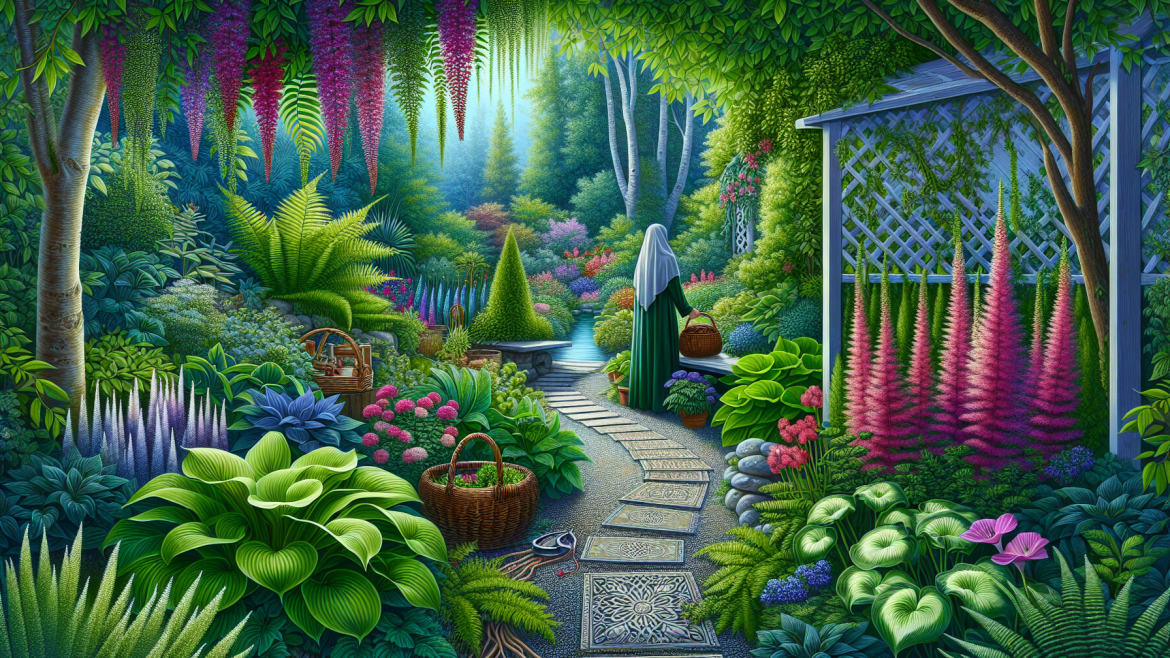Gardening in the shade can be both a challenge and an opportunity. While it may limit the types of plants that can receive sufficient sunlight, shade-loving plants often thrive in areas under trees, along the side of buildings, or in other shaded locations. This article offers insights into how to make the most of your shady garden spots by choosing the best plants and employing effective gardening techniques.
Understanding Shade Types
Before selecting plants, it’s essential to understand the different types of shade, as they each have varying levels of light exposure:
- Full Shade: Areas that receive less than 2 hours of direct sunlight per day and are shaded the rest of the time.
- Partial Shade: Areas that get 2 to 6 hours of direct sunlight per day.
- Dappled or Filtered Shade: Sunlight that filters through tree leaves, creating a mix of sun and shade.
Best Plants for Shade
Foliage Plants
Many plants grown for their attractive foliage do well in shaded conditions:
- Hostas: Known for their lush, broad leaves, hostas come in various hues of green, blue, and variegated patterns.
- Ferns: Ferns such as the Japanese Painted Fern and the Lady Fern thrive in full to partial shade with their delicate, airy fronds.
- Heucheras: Also called Coral Bells, Heucheras provide colorful leaves in shades of purple, green, and even silver.
Flowering Plants
Though shade gardens might not have as many blooms as sunny ones, they can still be vibrant with the right flowering plants:
- Astilbe: These plants produce feathery, plume-like flowers in shades of pink, red, or white that are perfect for shaded spots.
- Bleeding Heart: The classic heart-shaped, drooping flowers are a standout in any shade garden, particularly in spring.
- Impatiens: Ideal for partial shade, these annuals offer a burst of color with their abundant flowers in various hues.
Ground Covers
Ground cover plants can create a lush, green carpet in shaded areas:
- Vinca Minor (Periwinkle): A robust ground cover with small, periwinkle-blue flowers and glossy green leaves.
- Lamium (Dead Nettle): With its attractive foliage and small, colorful flowers, Lamium does well in shady conditions.
- Ajuga (Bugleweed): This plant produces dense foliage and spiky flowers that come in blue, purple, or white.
Effective Tips for Shade Gardening
Soil Improvement
Shade gardens often have different soil needs compared to sunny gardens. Enrich your soil with organic matter, such as compost or well-rotted manure, to improve drainage and fertility. This will create a healthier environment for your plants to grow.
Mulching
Applying a layer of mulch helps retain moisture, suppress weeds, and regulate soil temperature. Organic mulches, such as pine straw, bark chips, or leaf mold, are excellent choices for shade gardens.
Watering
Shaded areas tend to stay moist longer, so monitor the soil’s moisture levels to avoid overwatering. Most shade-loving plants prefer consistent moisture but not soggy conditions, so ensure adequate drainage to prevent root rot.
Plant Spacing
Due to lower light levels, plants in shaded areas may grow more slowly and reach out further for light. Ensure adequate spacing between plants to allow for proper air circulation and to prevent mildew and disease.
Creating Visual Interest
Using a variety of textures, colors, and heights can create a visually appealing shade garden. Contrast broad-leaved plants like hostas with the delicate fronds of ferns, and intersperse flowering plants among foliage plants for a splash of color.
Conclusion
Gardening in the shade can be a rewarding endeavor with its own unique set of plants and strategies. By understanding the different types of shade and selecting plants that thrive in low-light conditions, you can create a beautiful, thriving garden oasis. With proper soil management, watering, and thoughtful plant placement, your shade garden will not only survive but flourish, becoming a serene retreat in the landscape.
